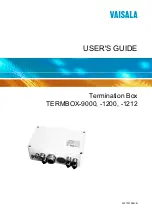
Infortrend
2-2
larger drives can be more efficient than that of many but
smaller drives.
3. How many drives would you like to appear to the
host computer?
It must be decided what capacity will be included in a logical
configuration of drives, be it a logical drive or a logical volume.
A logical configuration of drives will appear to the host as a
single capacity volume.
You may compose a large logical volume consisting of drives
on different drive channels, and have it partitioned into smaller
partitions. Each partition will appear as an independent
capacity volume. In a performance-oriented configuration, you
may configure the same number of drives into several RAID 0
logical drives just to get the most out of the array performance.
4. What kind of host application?
The frequency of read/write activities can vary from one host
application to another. The application can be a SQL server,
Oracle server, Informix, or other data base server of a
transaction-based nature. Applications like video playback and
video post-production editing require read/write activities of
larger files coming in a sequential order.
Choose an appropriate RAID level for what is the most
important for a given application – capacity, availability, or
performance. Before creating your RAID, you need to choose
an optimization scheme and optimize each array/controller for
your application. Stripe size and write policy can be adjusted
on a per logical drive basis.
5. Dual loop, hub, or switch?
Unpredictable situations like a cable coming loose can cause
system down time. Fibre channel dual loop or redundant data
paths using flexible LUN mapping method can guarantee there
is no single point of failure. The use of Fibre channel hub or
switch makes cabling and topology more flexible. Change the
channel mode, connection type, and other associated settings to
adjust the controller to your demands.
6.
















































